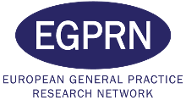Developing a semi-automatic COVID-19 syndromic surveillance tool into a fully automated tool for respiratory infectious diseases in Belgian General Practices
Laura Debouverie, Mélanie Nahimana, Floriane Rouvez, Robrecht De Schreye
Keywords: Respiratory infections, Syndromic surveillance, General Practices, eHealth, Lessons learned
Background:
General Practitioners (GPs) are the primary point of contact for patients with health issues and key for surveillance. During the COVID-19 pandemic, a real-time semi-automatic syndromic surveillance tool was implemented in Belgium, the COVID-19 Barometer in General Practices (COVID-19 BGP). The Electronic Medical Records (EMR) are used by GPs to store patient data, including diagnosis (e.g. ICPC-2 codes) and patient contacts, hence using EMR software statistical modules allows us to collect data. Since early 2023, we are developing further the COVID-19 BGP to collect data on Respiratory Infectious Diseases (RIDs) in a fully automated way.
Research questions:
To document the development of the COVID-19 BGP into a fully automated real-time syndromic surveillance tool of RIDs.
Method:
We identified strengths and limitations of the existing COVID-19 surveillance tool based on feedback of participating GPs, stakeholders and scientific experts. Concurrently, we selected RIDs-related ICPC-2 codes and initiated technical development of the EMR software statistical modules to collect data automatically at a pre-set frequency from GP Practices. We defined legal and ethical requirements for automated data collection.
Results:
An automated data collection will address the need for real-time and continuous syndromic surveillance to monitor Belgian population health, reduce GPs reporting burden and contribute to the National and European Pandemic Preparedness plan.
We started to develop the automated data extraction with a selection of ICPC-2 codes related to RIDs : COVID-19, Influenza Like Illness and Acute Respiratory Infections. Furthermore, we have been evaluating the specificity of codes, determining the usage/coding level in the practice, choosing relevant risk factors for reporting (e.g. age groups) and setting up case definitions.
Conclusions:
To ensure real-time syndromic surveillance of RIDs, while reducing reporting burden for GPs, a fully automated data collection from the EMR system is both necessary and feasible.
Points for discussion:
Ensuring the validity of technical developments in EMR softwares
Reporting data from real-time surveillance
GPs' involvement in an automated syndromic surveillance tool
#46

